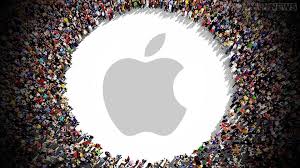
Apple Inc. (NASDAQ:AAPL) revamped its digital assistant Siri in 2014 and nobody seemed to notice. However, the changes were geared towards making Siri the best digital assistant on the market.
Siri wasn’t always as great as it is. When Apple launched Siri in 2011, it was welcomed with mixed reactions. In fact, it was less capable than the Siri app launched on the Play Store by the original developers of the digital assistant. Apple is reportedly said to have deliberately turned down the dial on the version from the original developers. At one point, it was clear that similar digital assistants from rival companies were better than Siri.
On July 30, 2014, Apple adopted a new artificial intelligence technique known as neural networks which it used to transform Siri into a more advanced intelligent system. Apple has since carried out improvements on the service. Prior to the use of neural networks, Siri used conventional AI methods to recognize human voices. Neural Networks are created courtesy of modern computers which are more powerful. They also carry a lot of inspiration from the human brain. The adoption in 2014 had massive changes to Siri but for some reason, people failed to notice that Siri was different. In fact, it was the biggest change to the digital assistant since it was launched in 2011.
A few individuals, however, took note that Apple had hired some neural network experts. The reason why it was probably not easy for users to notice is because Siri’s voice remained the same. However, the introduction of neural networks allowed the service to have a better understanding of audio commands from the users. The changes were so significant that Siri had half as many errors after the 2014 change as it did before the implementation of neural networks. According to Alex Acero, the head of the Siri team at Apple, the change reduced the rate of errors in all the languages by a factor of two and by more than a factor of two in most instances.




